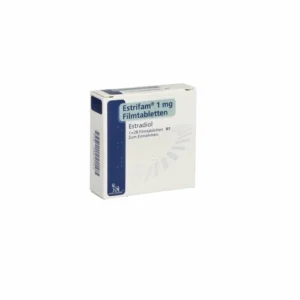Therapeutic indications
Hormone replacement therapy in the climacteric period for the treatment of symptoms associated with estrogen deficiency: climacteric syndrome (vasomotor lability, atrophy of the urogenital organs).
Prevention of postmenopausal osteoporosis in women with an increased risk of its development.
Contraindications
Hypersensitivity to any component of the drug; pregnancy or suspected pregnancy; lactation period; liver failure, acute and chronic liver disease or a history of liver disease after which the organ function indicators did not return to normal; Dubin-Johnson or Rotor syndromes (hereditary benign hyperbilirubinemia); thromboembolic diseases (including history); cerebrovascular accidents (ischemic or hemorrhagic stroke); retinopathy, angiopathy; sickle cell anemia; history of or suspected malignant tumor of the mammary gland or endometrium; detected or suspected estrogen-dependent tumor (including genital tumors); fibroadenoma of the mammary gland; endometriosis; lipid metabolism disorders, hyperlipoproteinemia; idiopathic jaundice or itching during a previous pregnancy; history of herpes; otosclerosis (including exacerbation during pregnancy); bleeding from the genital tract of unknown genesis, metrorrhagia (of unknown etiology); severe heart disease (ischemic heart disease, atherosclerosis, heart defect, myocarditis); severe kidney disease.
Relative contraindications: caution should be exercised when taking the drug in case of bronchial asthma, diabetes mellitus, migraine, heart failure, liver and gallbladder diseases, epilepsy, arterial hypertension, depression, ulcerative colitis, uterine myoma, fibrocystic mastopathy, chorea, tetany, multiple sclerosis, varicose veins, kidney diseases, tuberculosis, porphyria.
Pharmacodynamics
Estradiol is identical to endogenous estradiol produced by the ovaries; reduces or eliminates early symptoms of estrogen deficiency; causes moderate proliferation of the endometrium and improves trophism of the genitourinary organs. Plays an important role in the development of bone tissue, prevents or reduces the decrease in the content of the mineral component of bone tissue, prevents the development of osteoporosis. By acting on the hypothalamic-pituitary system, it eliminates vegetative-vascular and psychoemotional disorders. Synthetic gestagen – norethisterone, like progesterone, serves to reduce increased stimulation and proliferation of the endometrium, which occur under the influence of estrogen.
During the intake of pink tablets or by the end of the intake of white tablets of the drug, menstrual-like bleeding occurs due to the withdrawal of the gestagen component.
Pharmacokinetics
Estradiol. After oral administration, it is quickly and completely absorbed. During the “first pass” through the liver, it is metabolized to less active products: estrone and estriol. Estradiol almost completely binds to plasma proteins, mainly to sex hormone-binding globulin, and to a lesser extent to albumin. Estrone and estriol are excreted with bile into the lumen of the small intestine, from where they are reabsorbed. The final loss of activity occurs as a result of oxidation in the liver. It is excreted mainly by the kidneys in the form of biodegradation products (sulfates and glucuronides) and partly unchanged.
Warning: Always consult a doctor before using medications.












